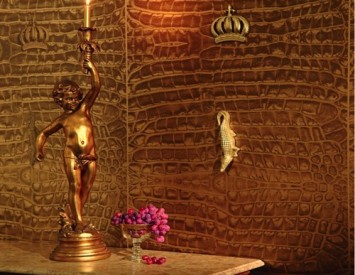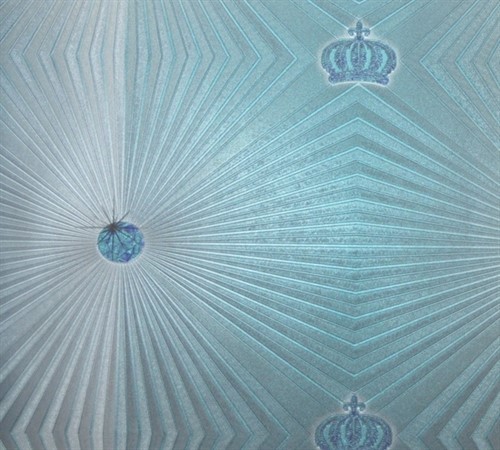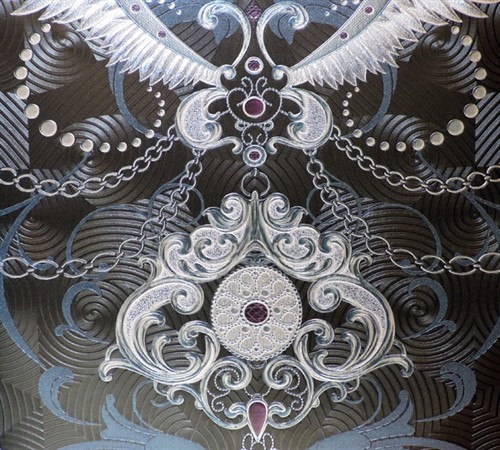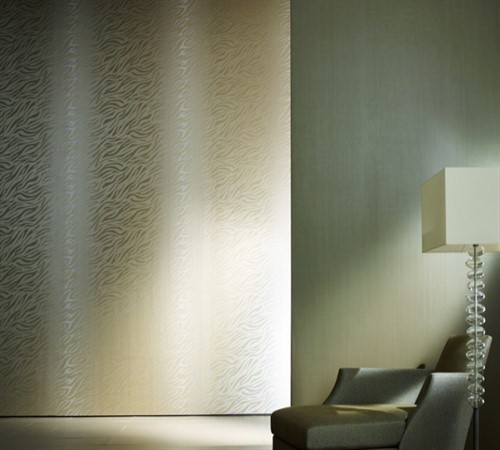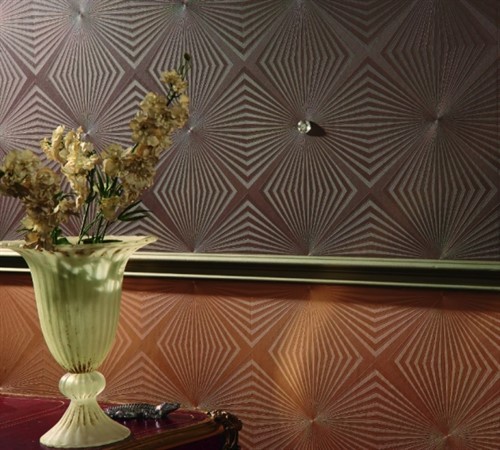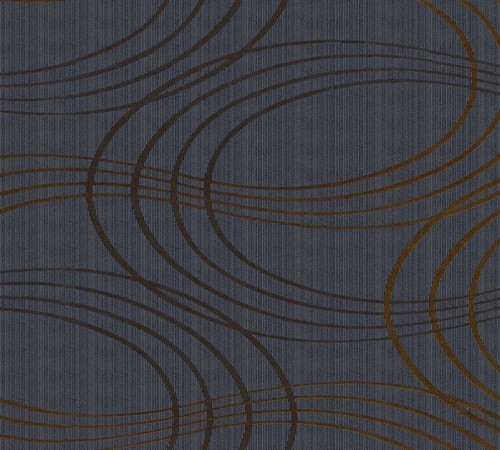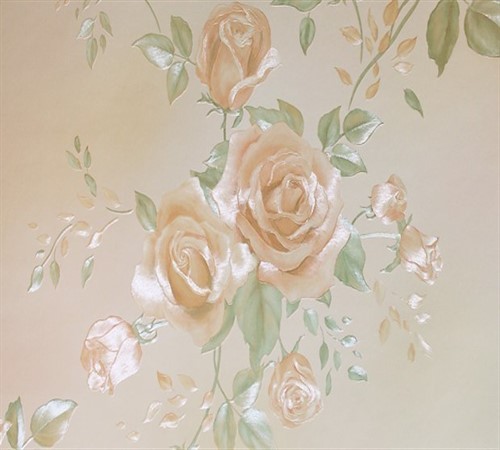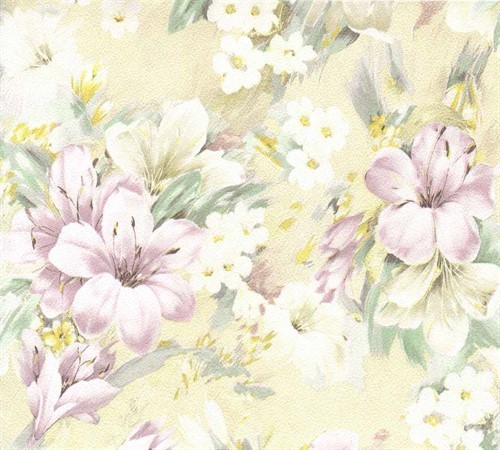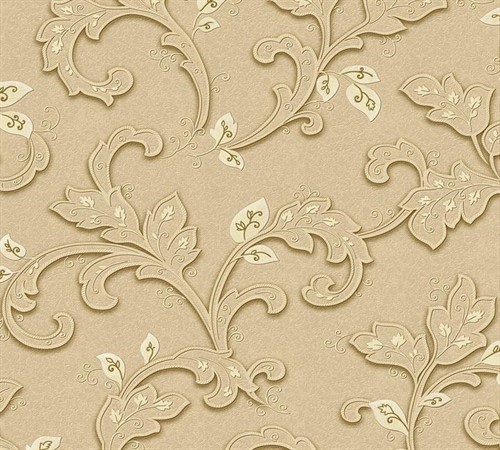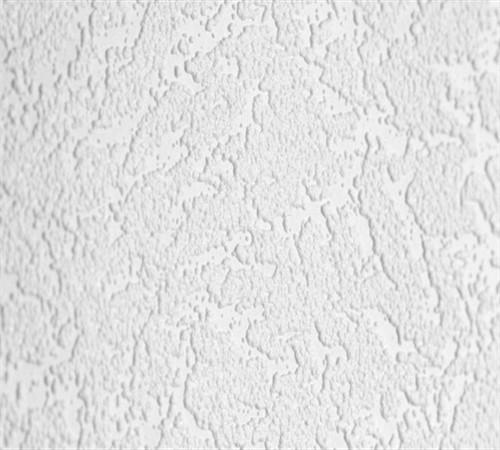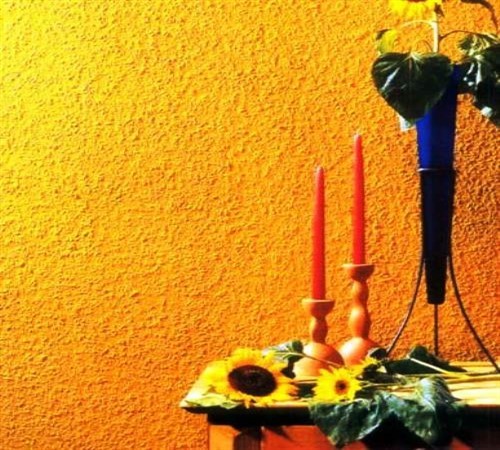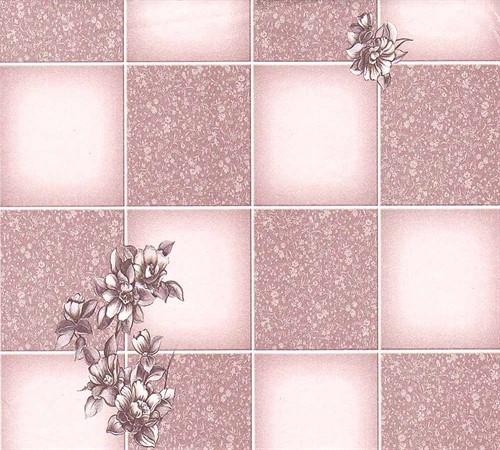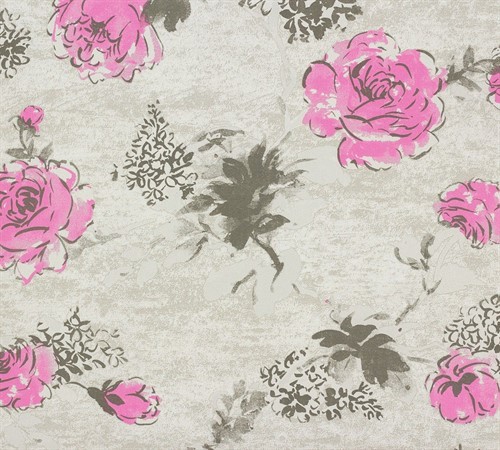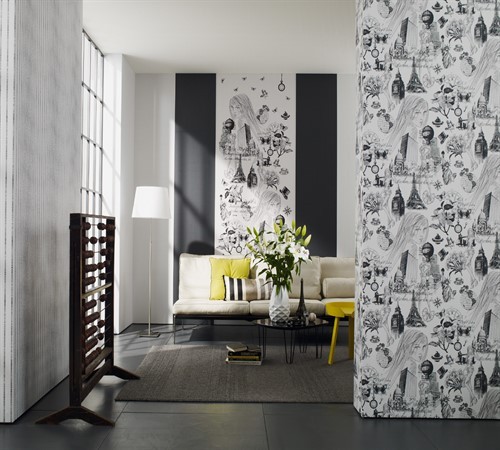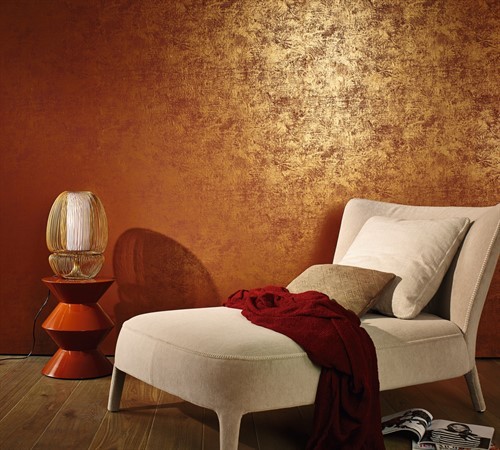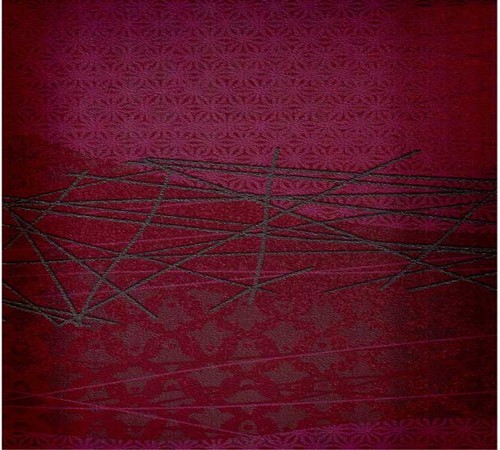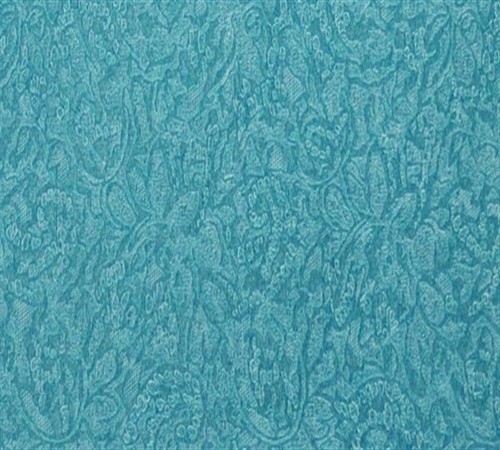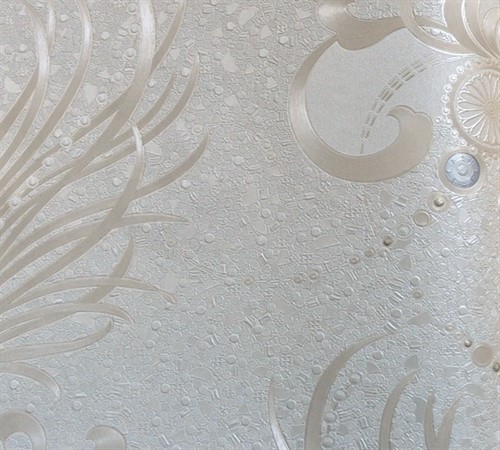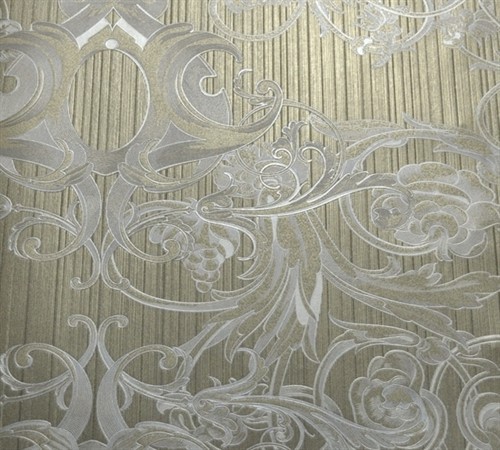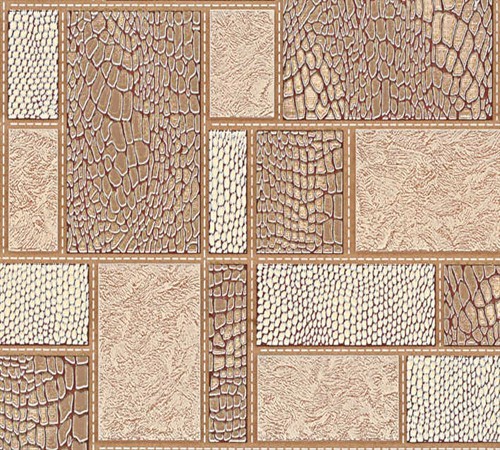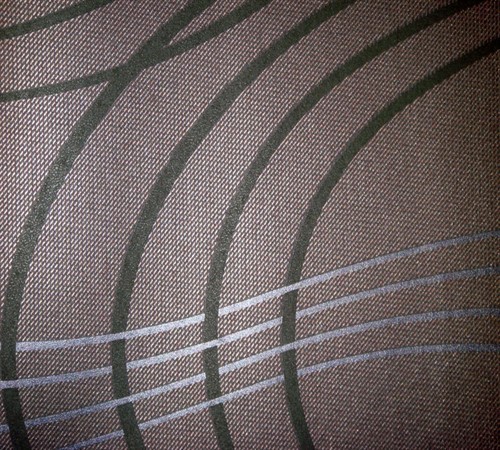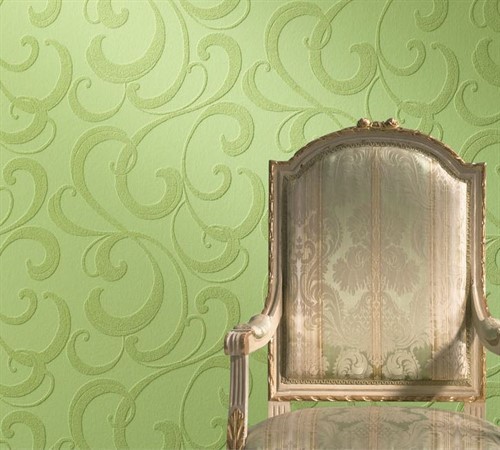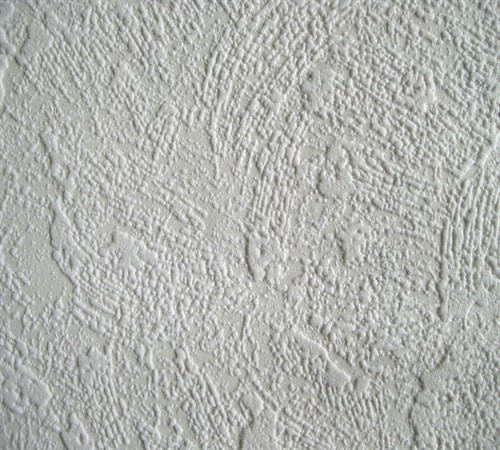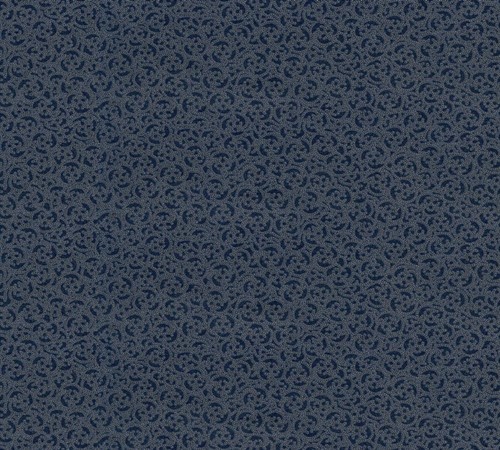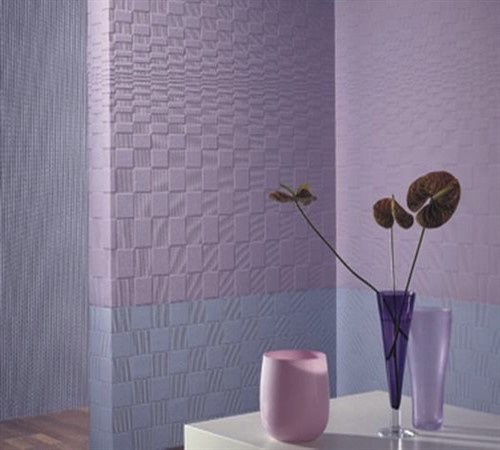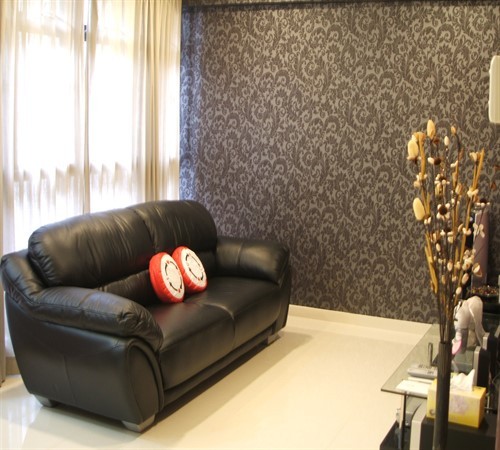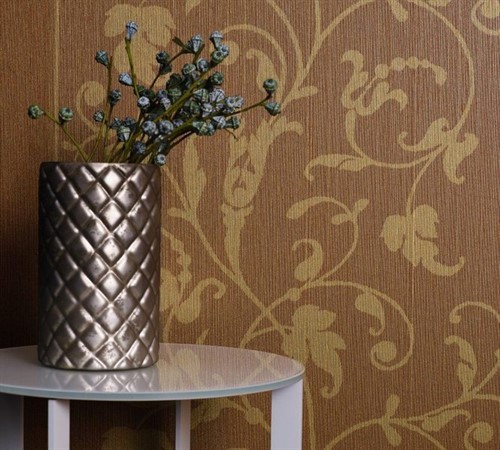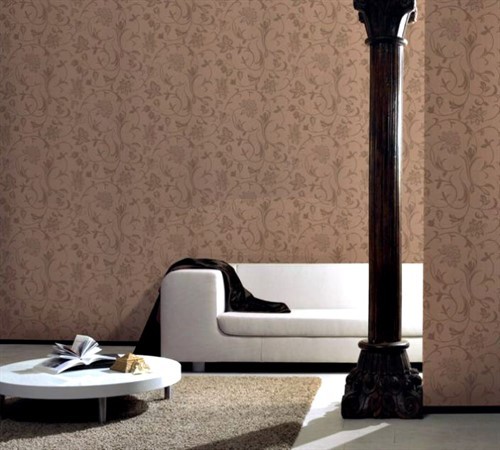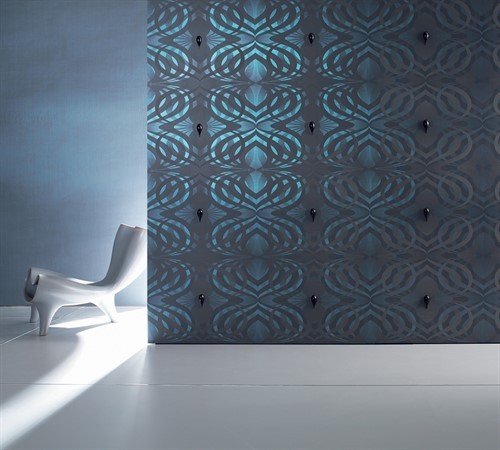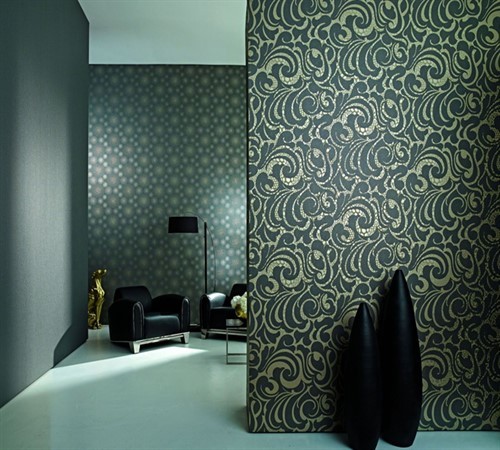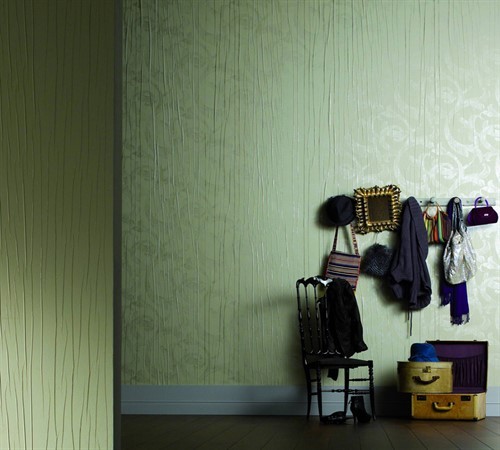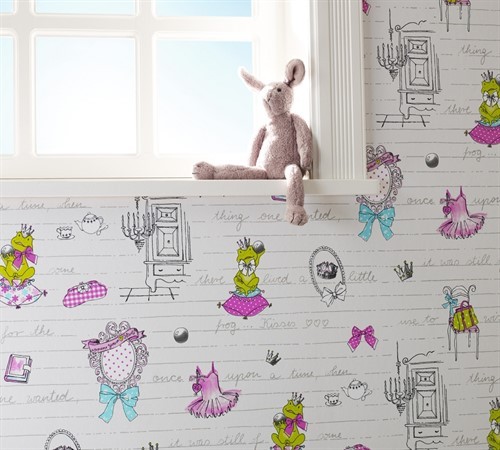Thanks to the qualitative characteristics, the unique performance style and other advantages, the German wallpaper Marburg has been in constant demand in all countries of the world with various financial capabilities for 170 years.
Content
Features of production
The appearance of the first wallpaper Marburg was in 1845, when most factories were engaged in the opening of production workshops in various countries of Europe and Asia. However, Marburg WallCoverings turned out to be one of the few companies that refused to transfer production to the eastern countries of Asia. The release of wallpaper only in Germany allows you to control each stage of the technological process, determining the excellent quality of products. At the same time, wallpapers intended for export to distant countries are not inferior in quality to the products sold in the country's countries.
The unique design of each collection of wallpaper is born as a result of the long -term operation of the leading designers of the world, and the use of innovative technologies helps to give ready -made coatings of various special effects. The most common phenomena include the game of light with a shadow, when during the day the color gamut of the wallpaper remains unchanged, and when the light is turned on, it begins to shimmer with various shades. Wallpaper is no less popular, which combines excellent materials in a number of indicators (for example, textiles with quartz sand). At the same time, most of the technologies used by the company in the manufacture of wallpaper canvases are patented, so the coating of many similar factories are devoid of the mass of advantages that are characteristic only of Marburg wallpaper.
High demand for German wallpapers is due not only to the features of production, but also by the advantages received by consumers in the process of installing paintings and their subsequent operation.
Advantages/disadvantages of Marburg wallpaper
A huge range of products of the most diverse colors and design produced by Marburg Wallcoverings has the following advantages:
- compliance with fashion trends;
- printing accuracy;
- ease of gluing on any surface;
- a wide price range, depending not only on the quality of the product, but also on exclusive creativity and diversity used in the production process of a particular collection of materials.
Despite a lot of positive points related to Marburg wallpaper, reviews can be heard the most diverse. At the same time, the joy of the possession of the products is still overshadowed by the price, since the cost of delivery to the country of the consumer and the store allowance is added to the production cost of the wallpaper. As a result of all the wrappers, the wallpaper of similar domestic manufacturers turn out to be an order of magnitude cheaper, discovering wider opportunities for small and medium -sized people. In this regard, at an affordable cost, buying Marburg wallpaper in an exclusive performance in countries remote from Germany is unlikely to be possible.
The advanced advantages and disadvantages characterize only the general idea of \u200b\u200bthe products of Marburg WallCoverings. However, operational characteristics directly depend on the materials used for the manufacture of wallpaper.
Types of wallpaper
Materials and technologies used in the production of a certain type of wallpaper have a significant impact on the qualitative characteristics of the finished coating.
Paper wallpaper
The cheapest and most environmentally friendly type of wallpaper is paper wallpapers (Marburg Crush Lounge), the thickness of the wallpaper, the thickness of the wallpaper, affects the wear resistance and other characteristics.
Depending on the number of layers of paper going to the creation of the coating, paper wallpapers are divided into the following categories:
- The Simeplex is a single -layer canvas, the inside of which plays the role of a substrate, and the front is designed to apply the drawing. A characteristic feature of the symptomed wallpaper is a smooth surface and a small thickness of the coating. Single -layer wallpapers attract buyers with a low cost and a variety of design. However, the strength characteristics of such wallpaper are small. In addition, before gluing, it is necessary to carefully prepare the surface, because through the thin canvas the irregularities available on the glued base are well appeared.
- Duplex - contain 2 or more layers of paper, which are glued together, after applying the picture to the upper row of paper coating. A more complex production technology significantly increases the strength and moisture resistance of the product, so the duplex wallpapers are much more expensive than the symptomed version. The surface of the duplex wallpapers, depending on the method of applying the picture, happens with both an inconspicuous and deep relief.
Multilayer paper wallpapers are used for painting, which differ in the texture of the decorative layer and are divided into:
- structural - in most cases are produced with the addition of polymers playing the role of a binder, and the pattern is applied by embossing, as a result of which the surface of the coating acquires a smooth or embossed surface, reminiscent of textured plaster;
- roughly fibrous ones-differ in the presence of wood chips pressed between layers of paper, as a result of which the surface of the coating acquires an intricate texture. When pasting, rough-fiber wallpapers well hide minor irregularities of the base;
- moisture-resistant paper wallpaper is used for finishing walls in rooms with high humidity, since finished coatings are treated with dirt, water-repellent compositions.
Advantages of paper wallpaper:
- environmental friendliness, because the basis of the manufacture of wallpaper is cellulose, and the additives used only increase the operational characteristics of the coating;
- good indicators of moisture and vapor permeability due to the loose structure of the canvas prevent the accumulation of excess moisture on the walls, reducing the risk of mold, fungi;
- a variety of color palette, along with an unlimited choice of drawings and ornaments from simple to the most intricate shape;
- low cost compared to other types of wallpaper.
Flaws:
- a short operational period rarely exceeding 3-5 years;
- quickly burn out under the influence of ultraviolet rays;
- low moisture resistance leads to yellowing of the coating over time;
- only dry cleaning is possible, so it is almost impossible to remove spots of various origin;
- low strength to damage in the process of pasting and during operation.
The peculiarity characteristic of any subspecies of paper wallpaper when pasting the surface is that the glue is applied to the wall and on the wrong side of the wallpaper. At the same time, single -layer wallpapers are overlapped, and multi -layer wallpaper - in the same way.
Given the above characteristics, the conclusion suggests itself that paper coatings are more suitable for finishing the walls of residential or public premises with a low level of humidity.
Vinyl wallpaper
Thicker and more durable - vinyl wallpapers represented by the Marburg Estell, Opulence, Messina, OpULENSE GIULIA, etc. A polyvinyl chloride is applied to a substrate made of paper or non -woven, after which a certain drawing is given by the coating:
1. PVC foaming at high temperatures. The wallpaper, the upper layer of which is represented by a foamed vinyl, stand out with a clearly defined texture, well mask the irregularities of the base, allow the population and realized by the population at an affordable cost. However, under the influence of sunlight, painted polyvinyl chloride after 2-3 years begins to lose the saturation of coloring. Wallpaper with a decorative layer of foamed PVC have relative resistance to damage, as well as rapid abrasion in places of contact with various interior items.
2. Chemical embossing. On top of the vinyl distributed on the substrate, special substances are applied, which at high temperatures do not allow the vinyl to be foamed. As a result, the coating acquires a glossy surface from which any pollution is easily removed. Vinyl wallpapers that have undergone chemical embossing have an original design, harmoniously combining the elements of silkography and foamed vinyl, and differ in good resistance to multiple moist cleaning and ultraviolet rays, and high mechanical strength affects the long -term operational period. At the same time, the high cost and the need for thorough preparation of the base are the main disadvantages of the wallpaper of this category.
3. Hot embossing. Each collection of wallpaper, produced by hot embossing, differs in the thickness of the canvas, structure and operational characteristics. Distinguish the following types of wallpaper obtained by hot embossing:
- flat vinyl (silk -screen printing) is characterized by a thin canvas, smooth and shiny surface. A unique design consisting in the game of light of brilliant areas, the high strength of the canvas, which does not depend on the thickness of the product, as well as the unprincipled removal of various contaminants form the positive aspects of the wallpaper. At the same time, the gluing of unprepared surfaces will be displayed on the finish coating with dents and influxes that were not eliminated at the preparatory stage, and the cost of wallpapers will not be affordable for no means;
- the compact vinyl is characterized by good relief and quite high density of wallpaper created under the skin, brick or masonry. Wallpapers from CD-Vinil hide minor wall defects, tolerate wet cleaning using detergents and are highly resistant to mechanical damage. The initial shade of the wallpaper, unlike a foamed vinyl, lasts a long time, without dull and not yellow under the influence of sunlight. However, the high density of the material requires preliminary application on the pasted surface of the primer, which contains fungicides. In addition, after the glue dries, a small shrinkage of wallpaper is possible.
Thus, vinyl wallpapers surpass paper coatings in many ways and make up the bulk of sales along with non -woven.
Floselywain wallpaper
The basis of coatings is a low -density non -woven, on which a decorative layer is applied, most often represented by vinyl. Although there are often options when the upper layer is higher than a higher density than the substrate. However, the high cost of purely non -woven wallpaper, despite the environmental friendliness of the product, repels the majority of buyers to purchase such expensive goods.
To the implementation of non -woven wallpaper from Marburg The Wall, Gloockler Childrens Paradise, Identity and other collections are delivered in two versions:
- painted - represent a finished finish coating;
- white - designed for coloring.
Pros of non -woven coatings:
- high strength;
- good masking of cracks, defects of the base;
- lack of deformation in the process of pasting and subsequent drying;
- hygroscopicity that prevents the formation of mold and fungus on the walls;
- duration of operation.
Significant disadvantages include only the cost, several times higher than the cost of vinyl wallpaper. Recently, overlapping wallpaper for painting Marburg has been gaining more and more demand, contributing to the creation of complex color schemes, textures, patterns and reducing the costs of acquiring coating, since unpainted wallpaper cost much cheaper than ready -made cloths. However, before acquisition, it should be borne in mind that at the expense of each layer of paint the coating acquires additional strength, but the indicators of air and vapor permeability are reduced. In addition, the wallpaper of non -woven Marburg, designed for coloring, should have a clear and deep texture, since with each staining the structure will become smaller.
In general, non-woven wallpaper can withstand up to 7-8 layers of paint without loss of relief, which affects the duration of the operational period.
Textile wallpaper
Along with non -woven, the substrate of textile wallpaper consists of paper or non -woven. In this case, the decorative layer is created from natural or synthetic threads and fibers.
The pluses of textile wallpaper:
- aesthetic attractiveness;
- the resistance to mechanical damage depends on the type of material used to create a finishing layer;
- high heat and soundproofing properties;
- duration of operation.
Cons:
- wet cleaning is acceptable to a limited circle of materials that make up a decorative layer;
- difficulty in gluing;
- rapid wear in places of frequent contact (sockets, switches);
- contribute to the accumulation of dust;
- smell and moisture absorb well;
- high cost.
From the extensive assortment of textile wallpaper, jute, silk, linen coatings are currently gaining more and more popularity, which will add a piece of sophistication and unique chic to any interior.
Wallpaper Marburg in the interior
The variety of Marburg wallpaper, the photo of which is presented below, in the most diverse style performance will allow you to freely choose the necessary option in the prevailing or planned interior design.
The modern design of vinyl wallpaper from the Messina collection with the presence of flickering elements and shimmering shades will emphasize the depth of the premises of both the kitchen, the hallway, and the living room.
The creative design of vinyl wallpaper from the ICON collection, harmoniously combining a variety of geometric images, will look no less extravagant.
At the same time, the paper wallpapers of the Crush Lounge series unobtrusive pastel colors will make a share of calm and comfort in both residential and office premises.
The collection of non -woven wallpaper Gloockler Childrens Paradise with the image of fairy -tale heroes is ideal for decorating a children's room.
Thus, each collection is unique to the uniqueness of the drawings, whether it be frontal prints, relief lines, or a classic of flower bouquets that can be combined with the ornaments of other collections. At the same time, a huge assortment of wallpaper in a wide variety of topics will allow you to easily choose a coating for an interior decorated in the high-tech style and in the classical style.
